Until 26th May 2024, Unravel: The Power and Politics of Textiles in Art shines a light on artists from the 1960s to today who have explored the transformative and subversive potential of textiles, harnessing the medium to ask charged questions about power: who holds it, and how can it be challenged and reclaimed? Spanning intimate hand-crafted pieces to large-scale sculptural installations, this major exhibition brings together over 100 artworks by 50 international practitioners. Drawn to the tactile processes of stitching, weaving, braiding, beading and knotting, these artists have embraced fibre and thread to tell stories that challenge power structures, transgress boundaries and reimagine the world around them.
This review summed it up nicely for me -‘hybrid, heterodox, filled with strangeness and anger and beauty and horror, Unravel at the Barbican is often gorgeously excessive, at other moments quiet and private, not giving up its secrets until you linger’.
An extraordinary experience – not at all what I expected and highly recommended. I really wanted to ignore the ‘Do Not Touch’ signs!
Here are some of the images I took when I visited last Saturday.
Views from the upstairs gallery …
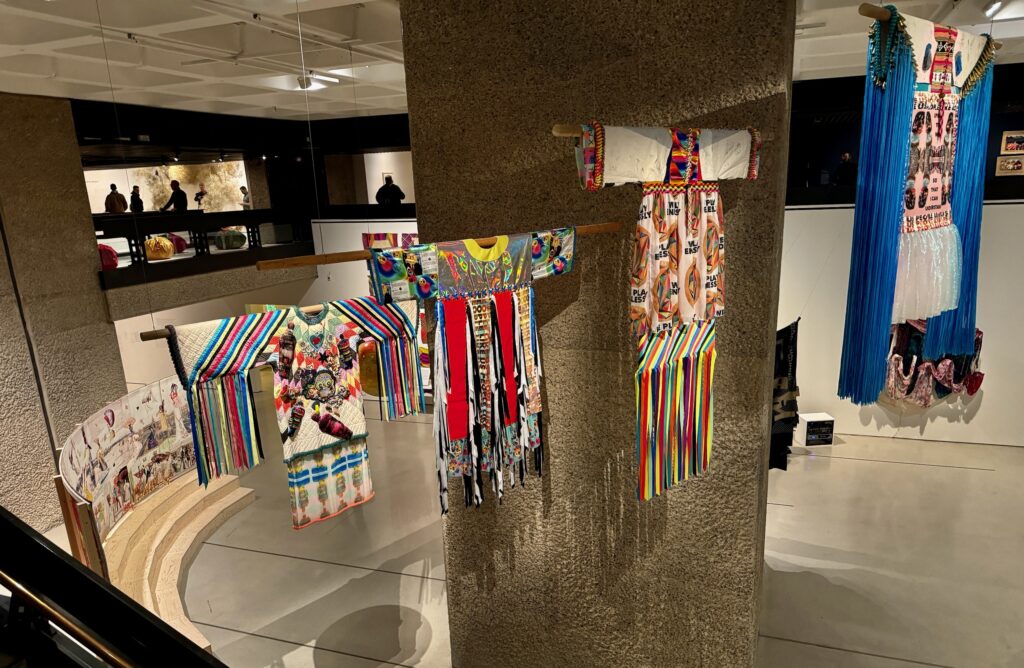
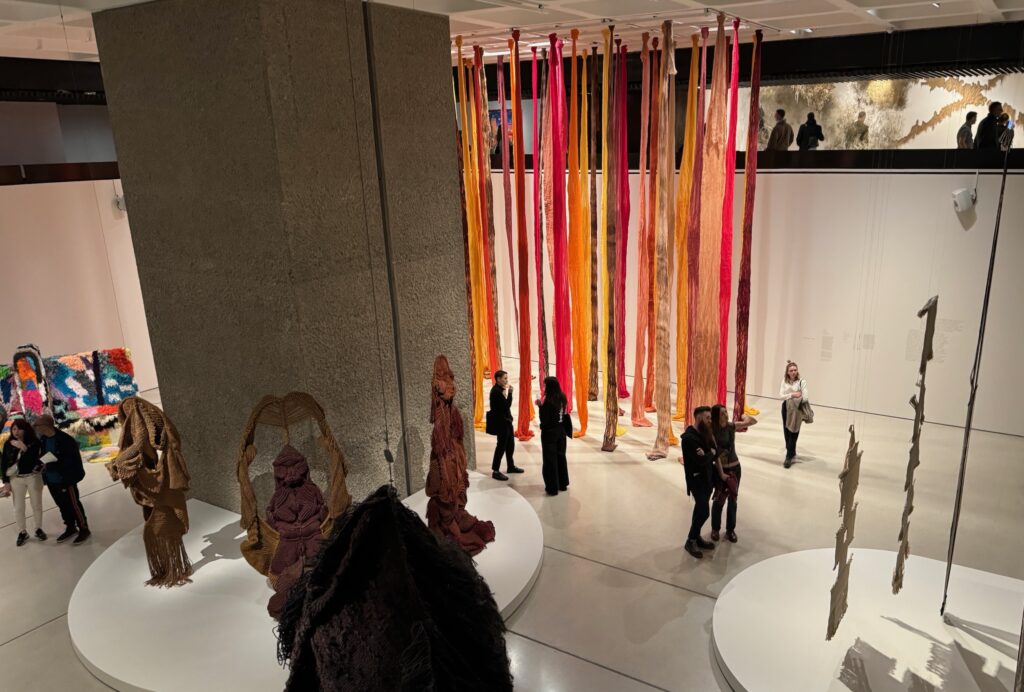
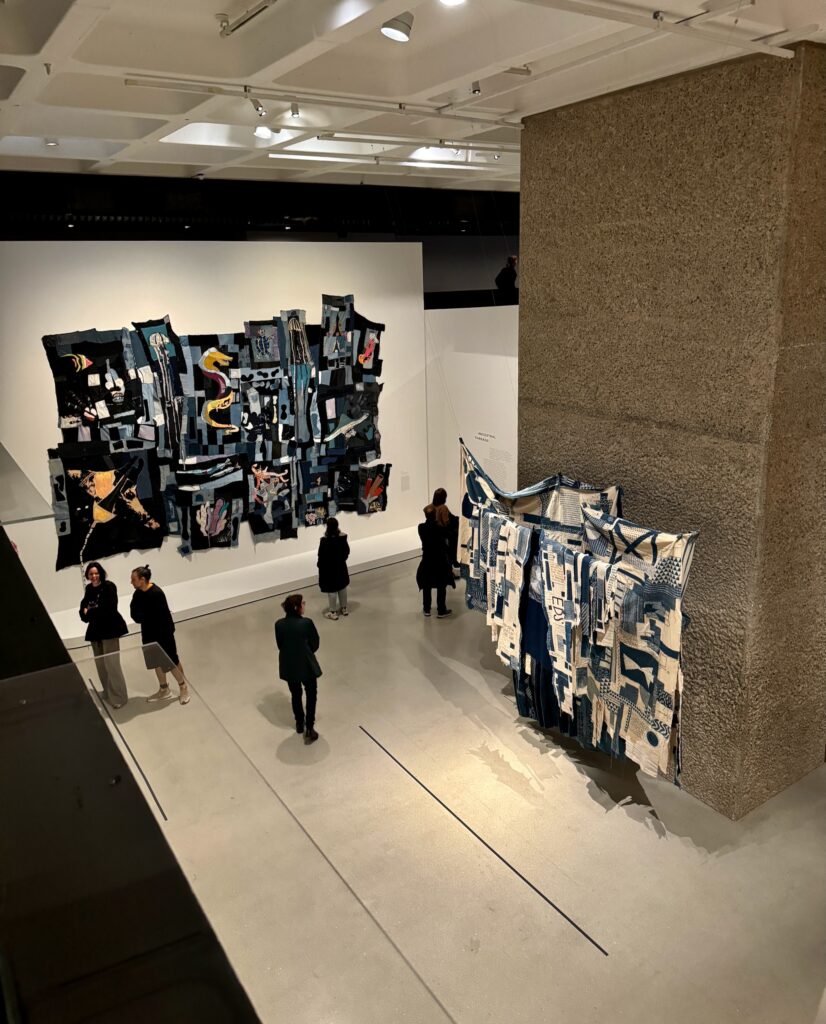
Yinka Shonibare’s figurative sculpture Boy On A Globe uses his signature Dutch Wax fabrics to address race, class and the legacy of imperialism by reflecting on colonial trade and the entangled economic histories embedded within fabrics …

The work of Małgorzata Mirga-Tas representing Roma people …
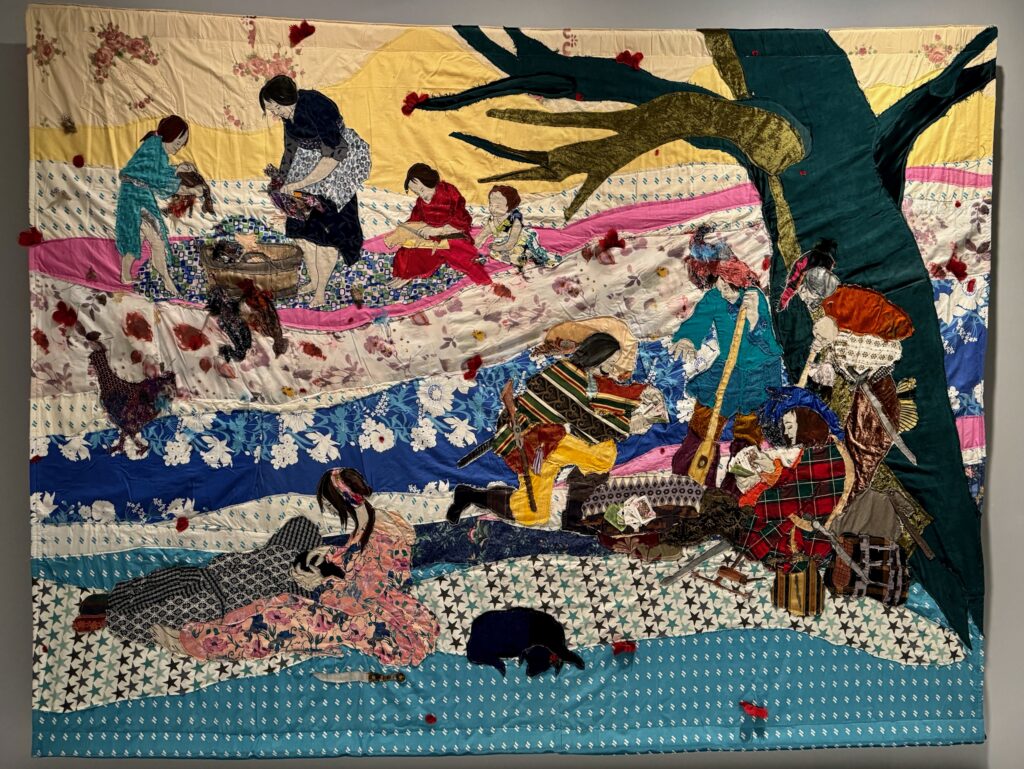
Family Treasues by Sheila Hicks …
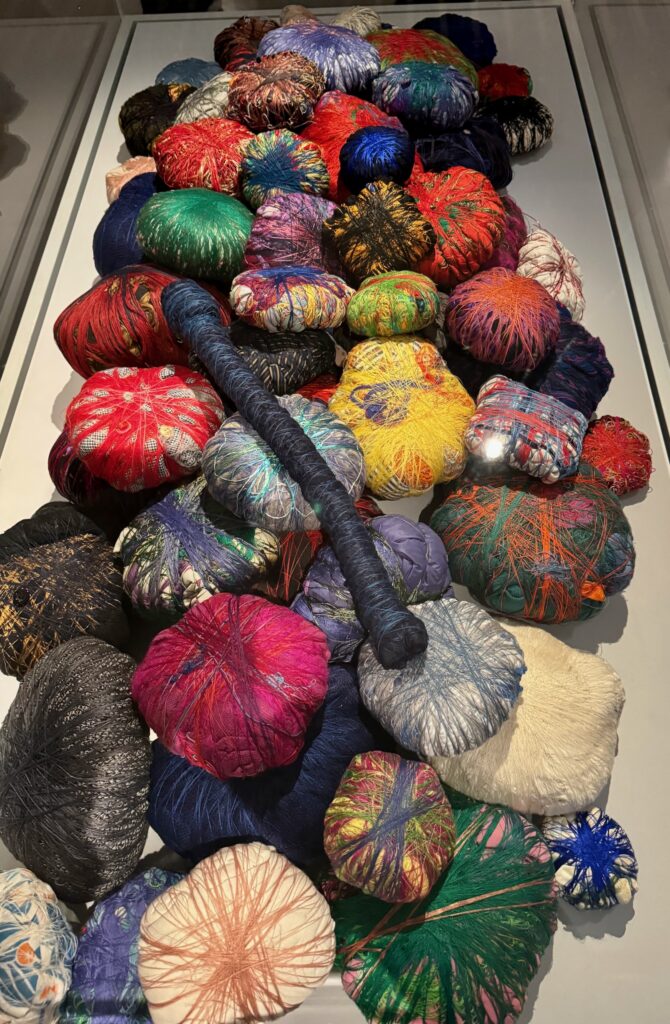
Faith Ringgold tells her life story in a quilt …
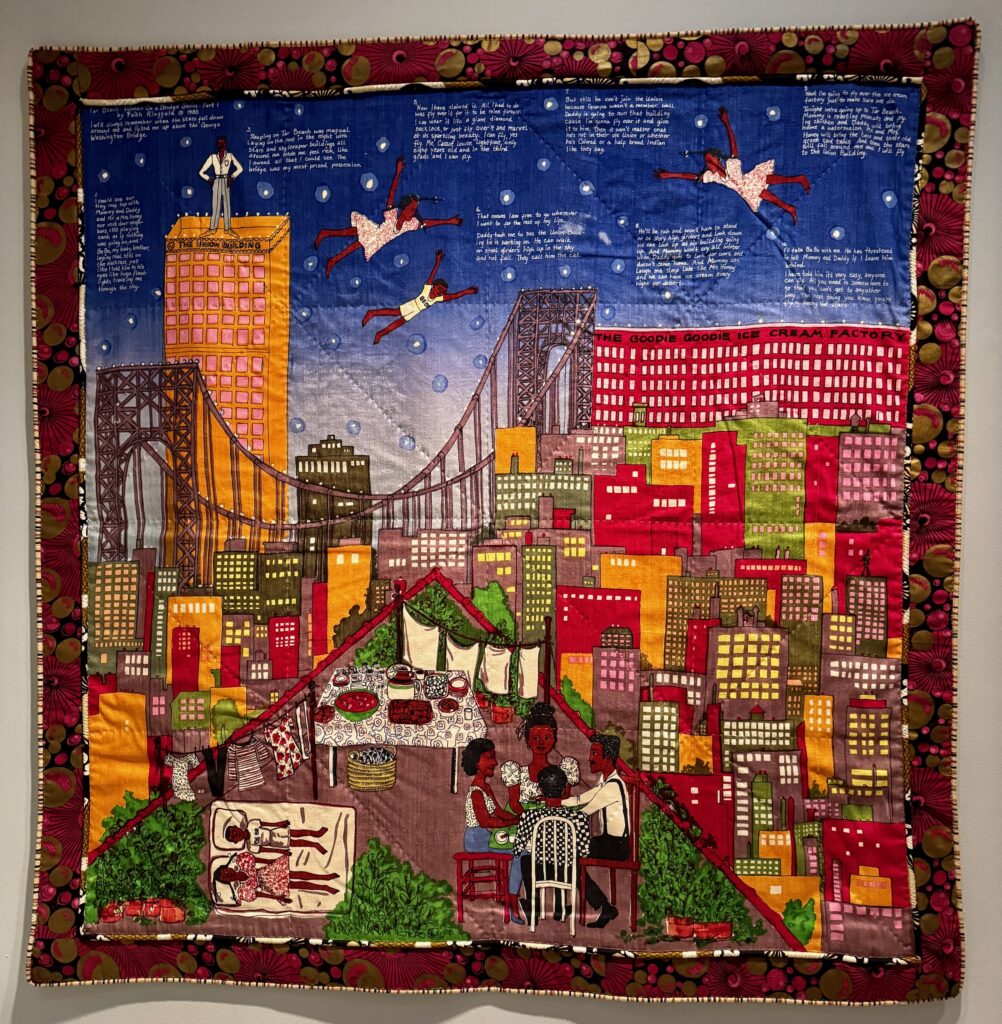
Hannah Ryggen’s Blut im Gras (Blood in the grass), 1966, protests against the US war in Vietnam. The then-US president Lyndon B. Johnson is depicted here nonchalantly wearing a cowboy hat …
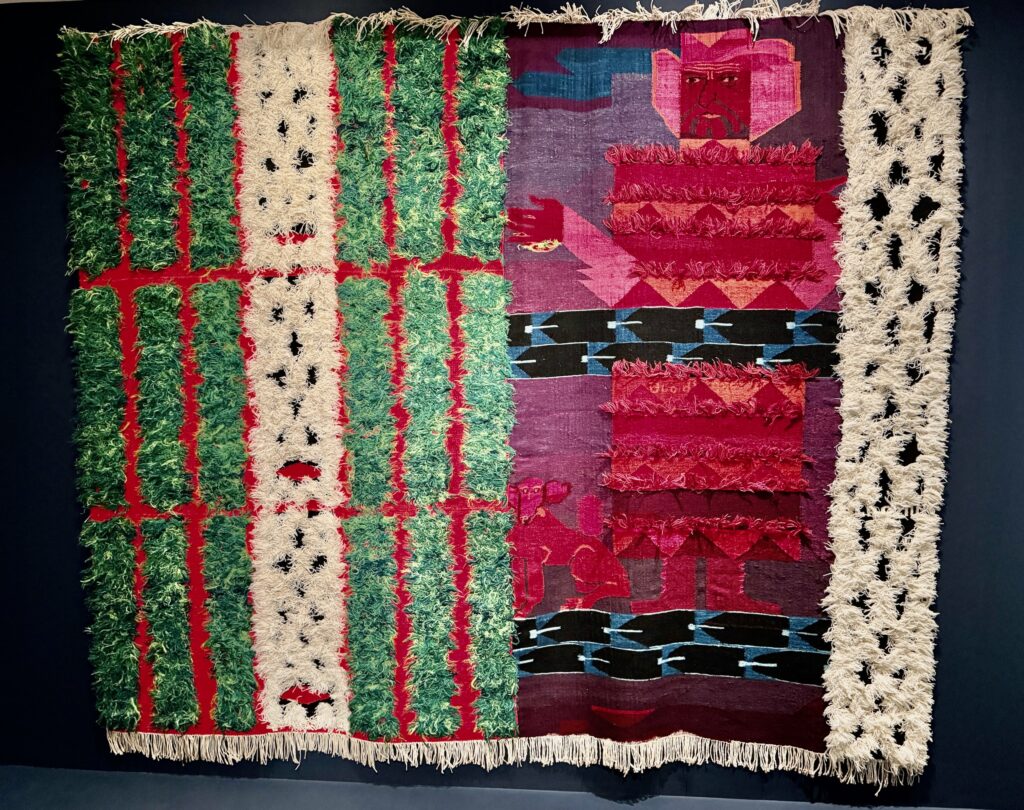
Arch of Hysteria by Louise Bourgeois uses a textile doll or model to convey a psychic experience of pain …
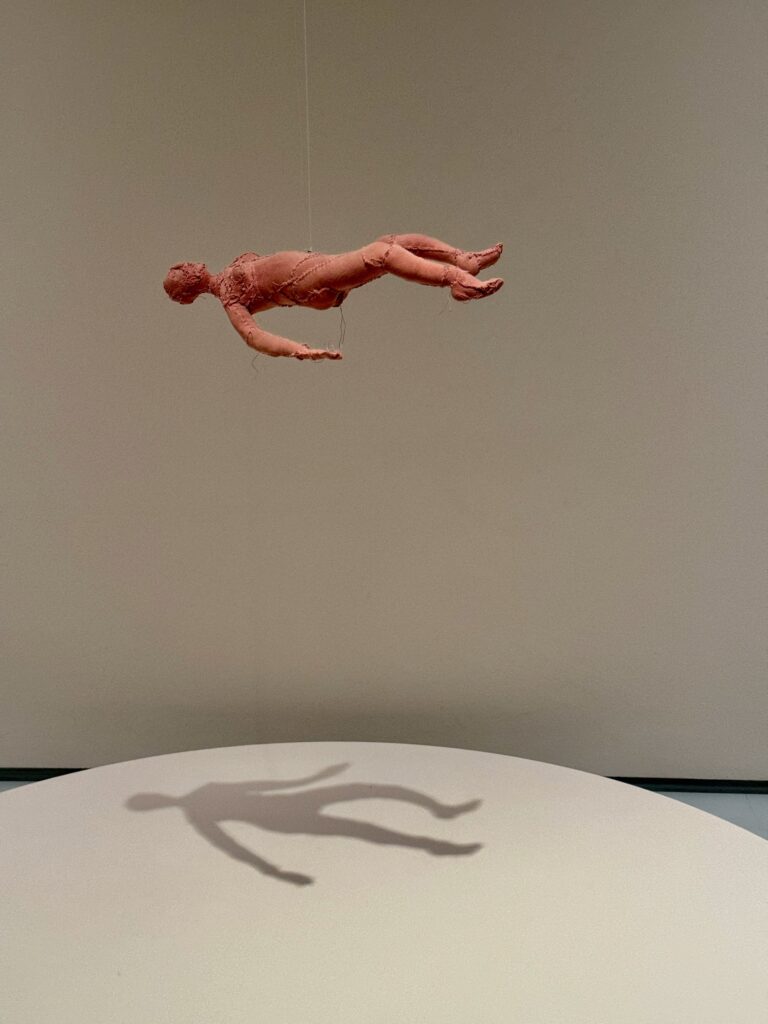
Myrlande Constant’s tapestries are drawn from Haitian Vodou traditions, her father was a Vodou priest …
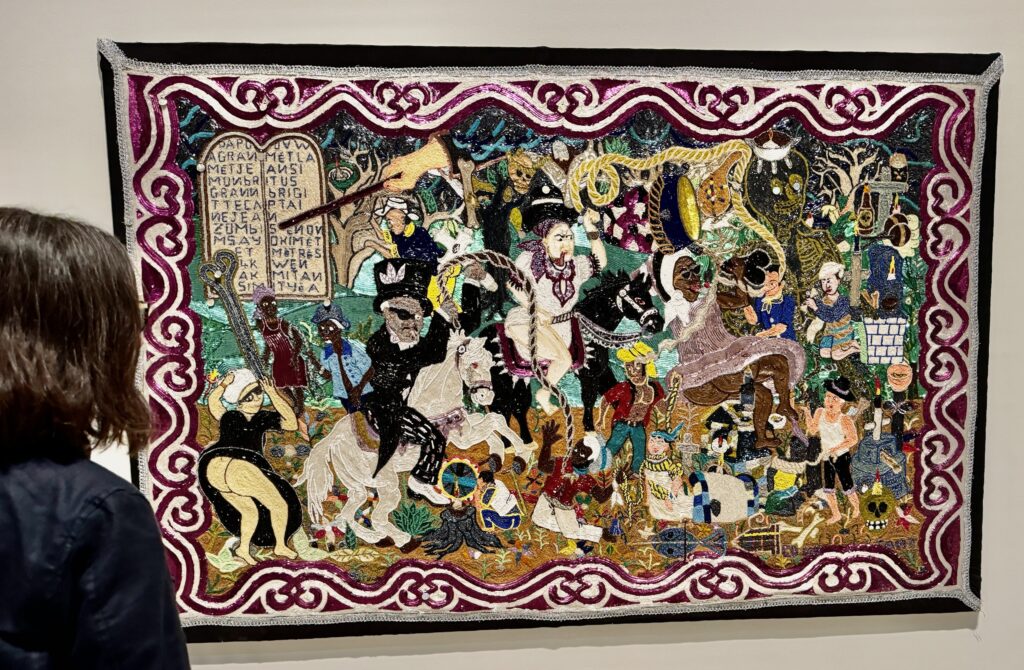
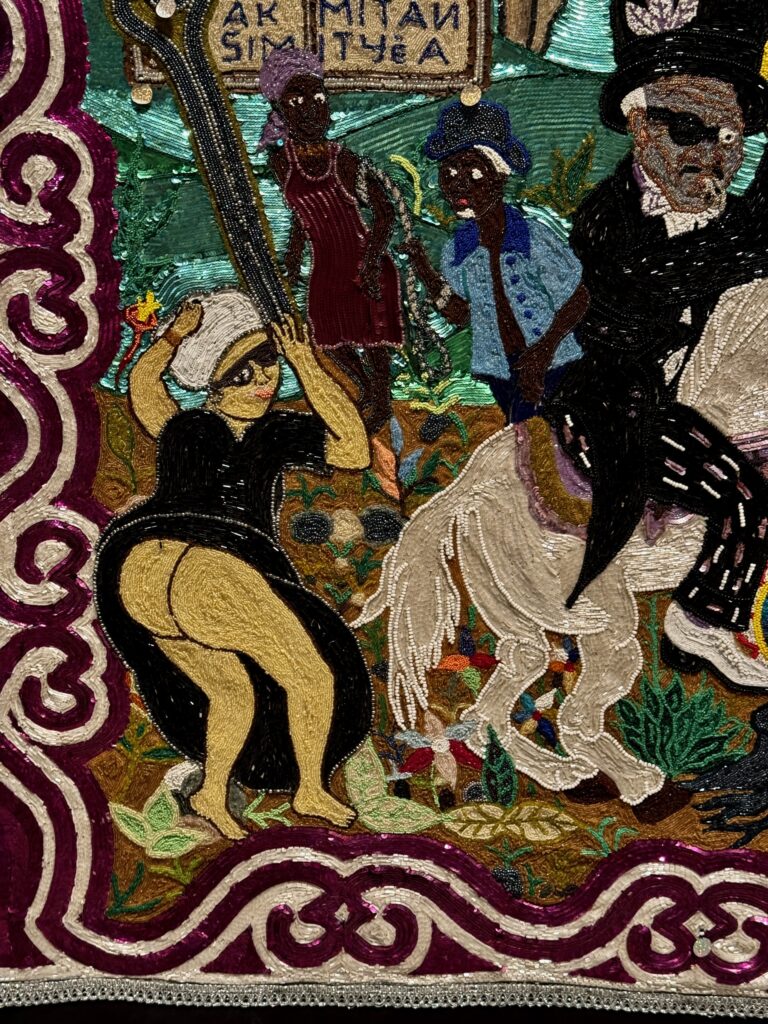
Tau Lewis uses recycled fabrics and seashells in The Coral Reef Preservation Society, partly in homage to enslaved people who lost their lives in the Middle Passage, a stage of the Atlantic slave trade …

These larger-than-life, deity-like macramé sculptures by Mrinalini Mukherjee surge up from the ground as though organic beings. Drawing on nature and myriad artistic references, their knotted, rippling forms confound expectations of textiles as two-dimensional …
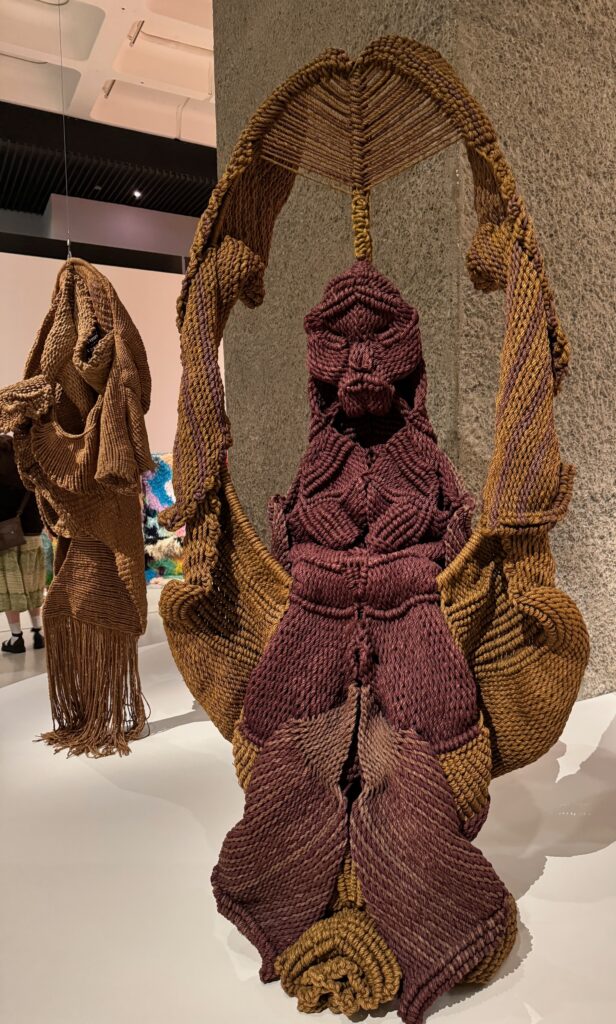
Sarah Zapata’s work embraces her identity as a Peruvian American – two cultures in which textiles are integral …
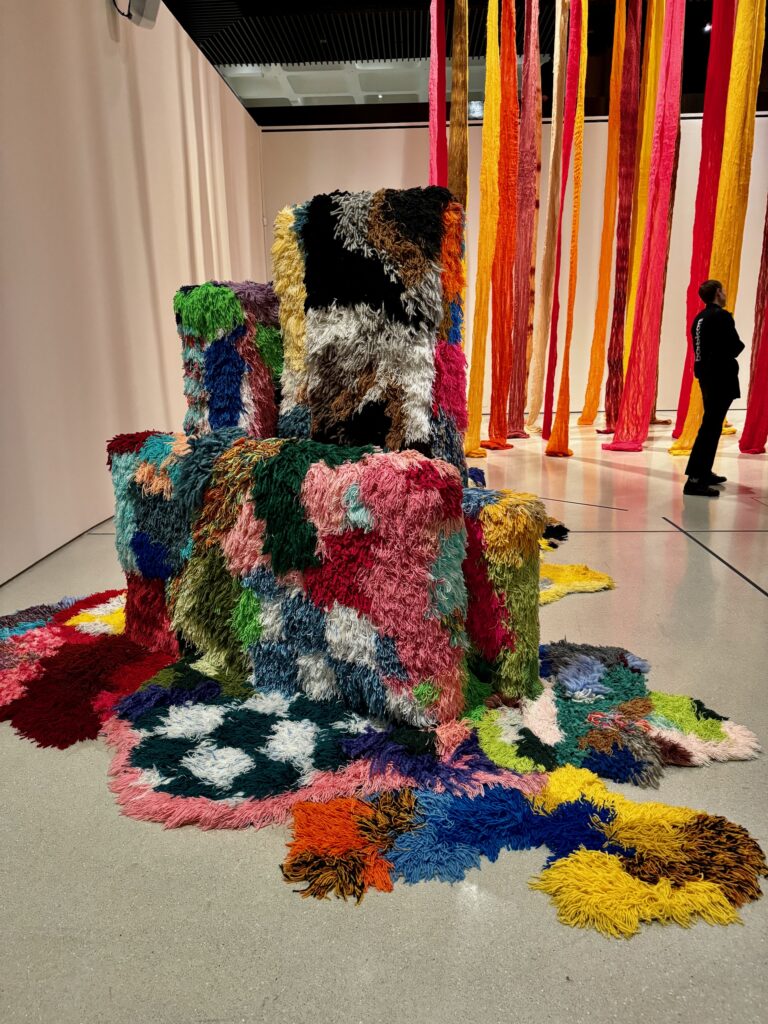
Solange Pessoa’s work, Hammock, was created in response to the land of Minas Gerais, Brazil, where she grew up. Textiles, in the form of rags and canvas, act as a carrier for living and decaying matter …
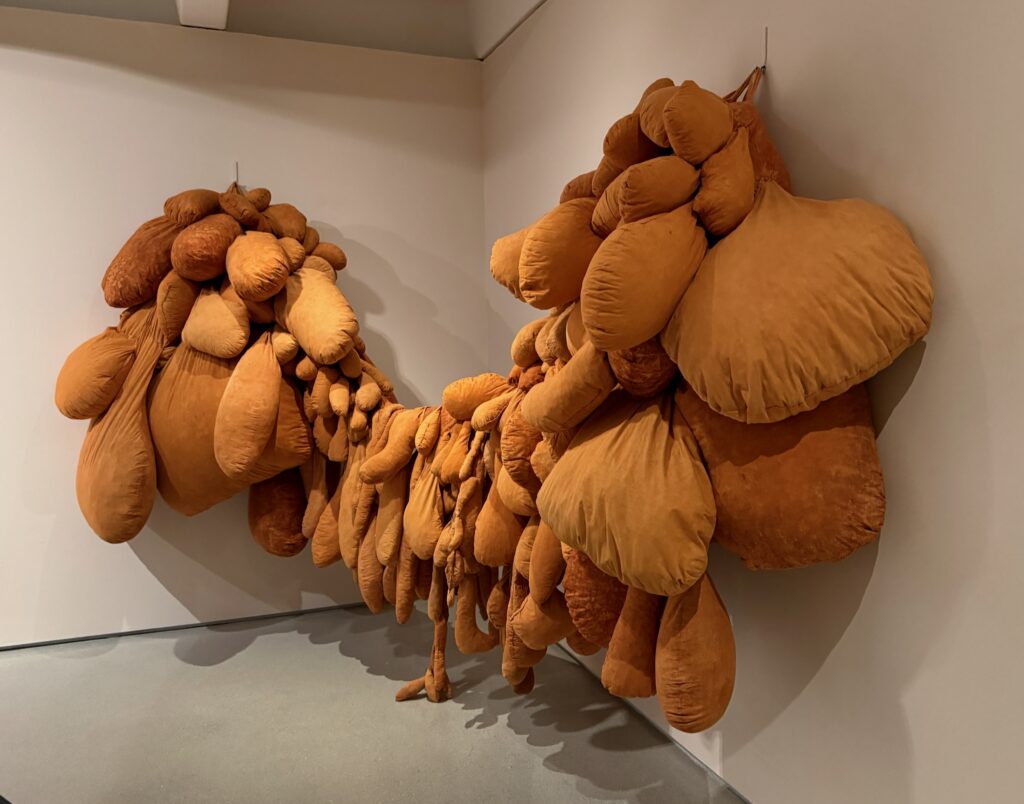
Tracey Emin is here too with a hard hitting work, No chance – WHAT A YEAR, about being raped when she was a thirteen-year-old girl (Content trigger warning) …
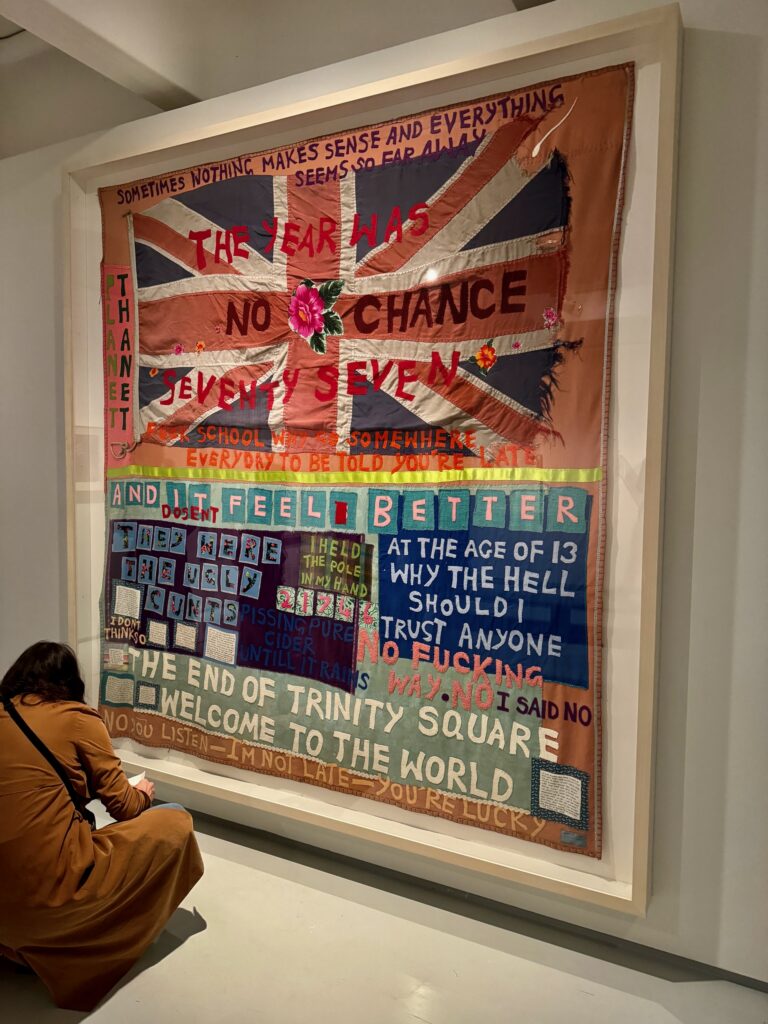
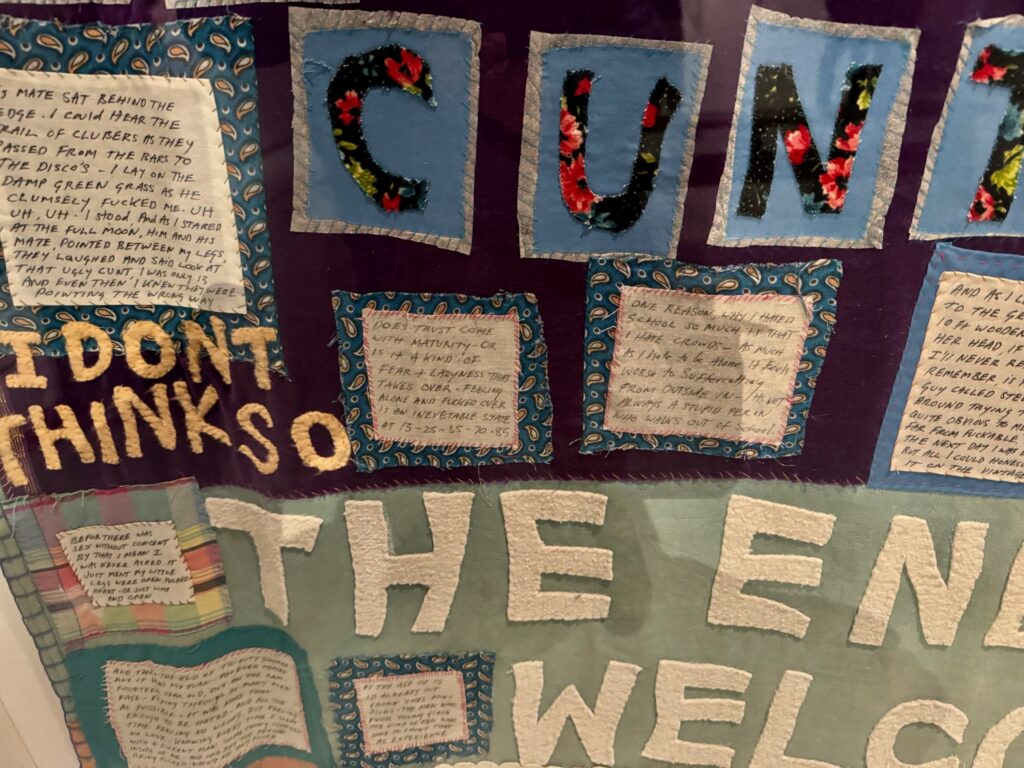
Unravel: The Power and Politics of Textiles in Art runs until 26th May 2024.
Remember you can follow me on Instagram …
